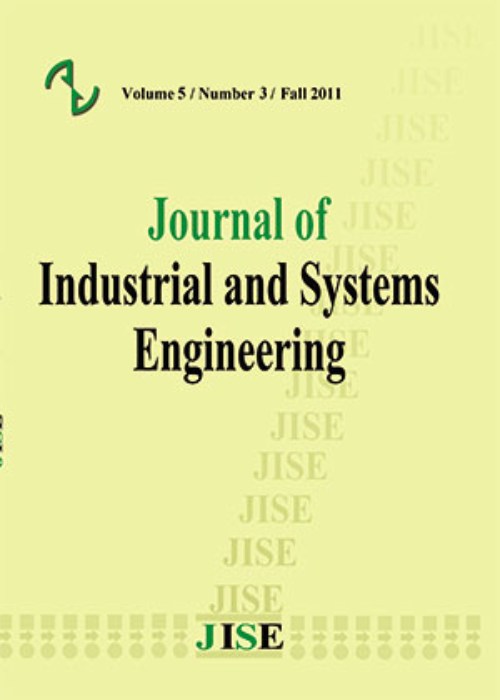فهرست مطالب
Journal of Industrial and Systems Engineering
Volume:2 Issue: 4, Winter 2009
- تاریخ انتشار: 1387/12/11
- تعداد عناوین: 5
-
-
A Comparison of the Mahalanobis-Taguchi System to A Standard Statistical Method for Defect DetectionPage 250The Mahalanobis-Taguchi System is a diagnosis and forecasting method for multivariate data.Mahalanobis distance is a measure based on correlations between the variables and different patterns that can be identified and analyzed with respect to a base or reference group. Thispaper presents a comparison of the Mahalanobis-Taguchi System and a standard statistical technique for defect detection by identifying abnormalities. The objective of this research is to provide a method for defect detection with acceptable alpha (probability of type I) and beta (probability of type II) errors.
-
Page 259Discrete-event simulation based optimization is the process of finding the optimum design of a stochastic system when the performance measure(s) could only be estimated via simulation. Randomness in simulation outputs often challenges the correct selection of the optimum. We propose an algorithm that merges Ranking and Selection procedures with a large class of random search methods for continuous simulation optimization problems. Under a mild assumption, we prove the convergence of the algorithm in probability to a global optimum. The new algorithm addresses the noise in simulation outputs while benefits the proven efficiency of random search methods.
-
Page 271In order to achieve the maximum flexibility in adaptation to ever changing customer’sexpectations in customer relationship management, appropriate measures of customer behavior should be continually monitored. To this end, control charts adjusted for buyer’s/visitor’s prior intention to repurchase or visit again are suitable means taking into account the heterogeneity across customers. In the case of a subscription-based service provider, this paper discusses three types of adjusted control charts considering grouped data on attribute usage measures are available at each subscription period. With appreciating the characterizing effect of customer’s overall satisfaction on his future behavior, regression based models and probability mixture models are used to account for heterogeneity in customers’ mean usage rate. Besides adjusted Shewhart and CUSUM control charts for Bernoulli and Poisson distributed usage indicators, the likelihood ratio test based on mixture probability models are investigated in term of detect ability of the shifts in usage behavior through a comparative simulation study.
-
Page 288We propose an exact method for generating random deviates from continuous order statistics.This versatile method that generates Beta deviates as a middle step can be applied to anyden sity function without resorting to numerical inversion. We also conduct an exhaustive investigation to document the merits of our method in generating deviates from any Beta distribution.
-
Page 297Process control charts are proven techniques for improving quality. Specifying the controllimits is the most important step in designing a control chart. The presence of outliers mayextremely affect the estimates of parameters using classical methods. Robust estimators which are not affected by outliers or the small departures from the model assumptions are applied in this paper to specify the control limits. All the robust estimators of dispersion which have been proposed during the last decade are evaluated and their performance in control charting is compared. The results indicate that the M-estimate is a better estimator of dispersion in the presence of outliers. We show that when the M-estimate with a bisquare ρ -function is used to estimate the dispersion, the S control chart has the best performance among all estimators.


